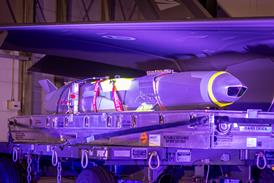France's Thales is major supplier to the SSJ, providing the avionics suite and the training system in deals that are worth a combined $150 million.
Thales Training & Simulation's (TT&S) contract to supply SCAC with three full-flight simulators (FFS) and three formation systems trainers is worth $33 million, with delivery of the first complete system with interim Level C approval due for August 2008. These will initially all be based at the new Moscow SSJ training centre, which is being constructed at the city's Vnukovo airport.
Thales, which is believed to be the first Western company to build a full-flight simulator of a Russian airliner, has agreed a workshare deal with SCAC. This will see the Russian company undertaking around 30-40% of the work in terms of man-hours, says Jeremy Standen, who is general manager of TT&S's aircraft simulation business. "Thales will provide all the hardware and Sukhoi will integrate some of the simulation software models in Moscow using our standard software tools."
Thales' latest C2000X technology, which was introduced at the beginning of this decade, will be the baseline for all the generic parts of the SSJ FFS system - motion, visual and computing architecture, says Standen. "Obviously the control software will be unique to the SSJ, which is the area of the workshare arrangement with Sukhoi." He adds that flight-control system supplier Liebherr Aerospace is providing data in the form of "Simulink" high-level modelling language to help Thales develop the SSJ's control system.
Thales Avionics signed a $120 million contract at the 2005 Paris air show to be the full integrator and avionics supplier for the flightdeck. This includes the purchase of the first 50 shipsets.
Thales's SSJ programme is managed by an engineering programme team in Toulouse in France, while a division has also been created in Moscow where a team (of which around half are Russian engineers) is working full time in close co-operation with SCAC. Design of the SSJ's avionics architecture was completed last year, and now the focus has switched to testing of the equipment, initially on the ground using the "electronic bird", and then in flight using the first development aircraft, says Thales.
The SSJ's flightdeck design is similar to that developed by Thales for the Airbus A380. It incorporates five identical large rectangular LCD screens - two each for the pilots providing primary flight and navigation data, and a central screen for display of engine, systems and warning information. The cockpit also incorporates a Class 2 electronic flight bag as well as an option for a dual head-up display.
Source: Flight International























